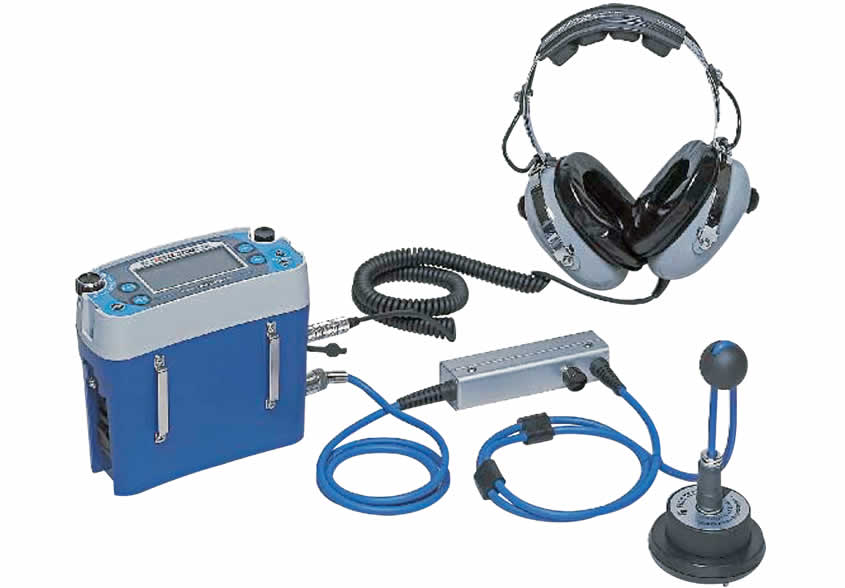Water Leak Detection: Just How to Recognize and Repair Leaks Prior To They Cause Damages
Water Leak Detection: Just How to Recognize and Repair Leaks Prior To They Cause Damages
Blog Article
Cutting-edge Solutions for Early Detection of Water Leaks in Structures and Framework
From sophisticated leak discovery technologies to the deployment of IoT sensing units for real-time tracking, the landscape of leak prevention is developing swiftly. Automated water flow evaluation systems are improving exactly how leakages are determined and addressed, leading the means for a proactive method to water leakage detection.
Advanced Leakage Discovery Technologies
Advanced leakage detection innovations, equipped with sophisticated sensors and formulas, play a critical role in swiftly identifying and determining water leaks in numerous settings. Electro-magnetic sensors can determine changes in electromagnetic areas created by water, supplying yet another layer of leakage detection capability.

IoT Sensors for Real-Time Monitoring
In the realm of contemporary water leakage discovery, the assimilation of IoT sensing units for real-time monitoring represents an essential innovation in enhancing proactive leak detection abilities. These sensors supply constant tracking of water supply, providing real-time data on water circulation prices, pressure variants, and temperature level adjustments. By leveraging IoT technology, these sensing units can discover also the tiniest abnormalities in water use patterns, making it possible for very early identification of potential leakages prior to they escalate right into significant problems.
IoT sensors send data to a centralized system, where sophisticated algorithms evaluate the information and produce alerts or alerts when abnormalities are detected. This real-time monitoring capability allows residential or commercial property proprietors or facility supervisors to quickly deal with leaks, lessening water damages, lowering repair prices, and preserving water sources.
Moreover, IoT sensing units can be integrated with building monitoring systems, permitting for automatic actions to discovered leaks, such as turning off water valves or triggering pumps to alleviate the impact of leaks. In general, the application of IoT sensing units for real-time monitoring substantially improves the effectiveness and effectiveness of water leak detection in structures and framework.
Artificial Intelligence Algorithms for Leakage Forecast

One trick advantage of utilizing artificial intelligence for leak prediction is its capability to constantly learn and improve its accuracy over time. As more data is gathered and fed into the algorithm, it can fine-tune its forecasts and adjust to altering conditions, inevitably enhancing the integrity of leakage detection systems.
In addition, maker learning algorithms can aid in recognizing subtle signs of leakages that may go undetected by typical tracking methods. water leak detection. By evaluating complicated information embed in real-time, these algorithms can supply early cautions and notifies, permitting for prompt intervention and preventative upkeep to minimize prospective water damages and associated costs
Utilizing Thermal Imaging for Leakage Detection
Thermal imaging technology uses an encouraging strategy for finding water leakages in different systems and infrastructures. By making use of infrared radiation and temperature variances, thermal imaging electronic cameras can identify concealed leakages that are not conveniently noticeable to the nude eye. When water runs away from pipes or structures, it usually changes the temperature of the bordering area, developing temperature level differentials that thermal electronic cameras can record. These temperature level irregularities are then converted into noticeable photos, highlighting the precise location of the leakage.
One of the essential benefits of thermal imaging for leak detection is its non-intrusive nature. Overall, the usage of thermal imaging modern technology enhances the efficiency and precision of water leakage detection, making it a useful device for maintaining the honesty of buildings and infrastructures.
Automated Water Flow Analysis Systems
Just how can automatic water circulation analysis systems transform the discovery and monitoring of leaks in various systems and frameworks? Automated water circulation evaluation systems provide a positive method to leak detection by constantly keeping an eye on water flow rates and patterns. By developing baseline information, these systems can rapidly identify discrepancies that may suggest a leakage, allowing prompt intervention to avoid extensive damages.
These systems use advanced formulas to evaluate browse around here real-time data and provide prompt alerts when abnormalities are identified, permitting speedy activity to be taken. Additionally, computerized water flow evaluation systems can be integrated with structure management systems or IoT platforms, improving total performance and enabling remote tracking capacities.
Furthermore, the information gathered by these systems can be utilized for anticipating upkeep functions, helping to recognize prospective weak factors in the infrastructure prior to leakages take place. On the whole, the implementation of computerized water flow analysis systems can considerably enhance leakage detection and administration techniques, eventually causing cost financial savings, lowered like it water wastefulness, and boosted sustainability in buildings and infrastructure.

Verdict
To conclude, the assimilation of innovative leak detection modern technologies, IoT sensors, artificial intelligence formulas, thermal imaging, and automatic water flow evaluation systems uses innovative solutions for very early detection of water leakages in structures and framework. These modern technologies allow real-time surveillance, prediction of leakages, and reliable detection techniques to stop water damage and waste. Applying these solutions can help in keeping the stability and sustainability of water systems in different settings.
Report this page